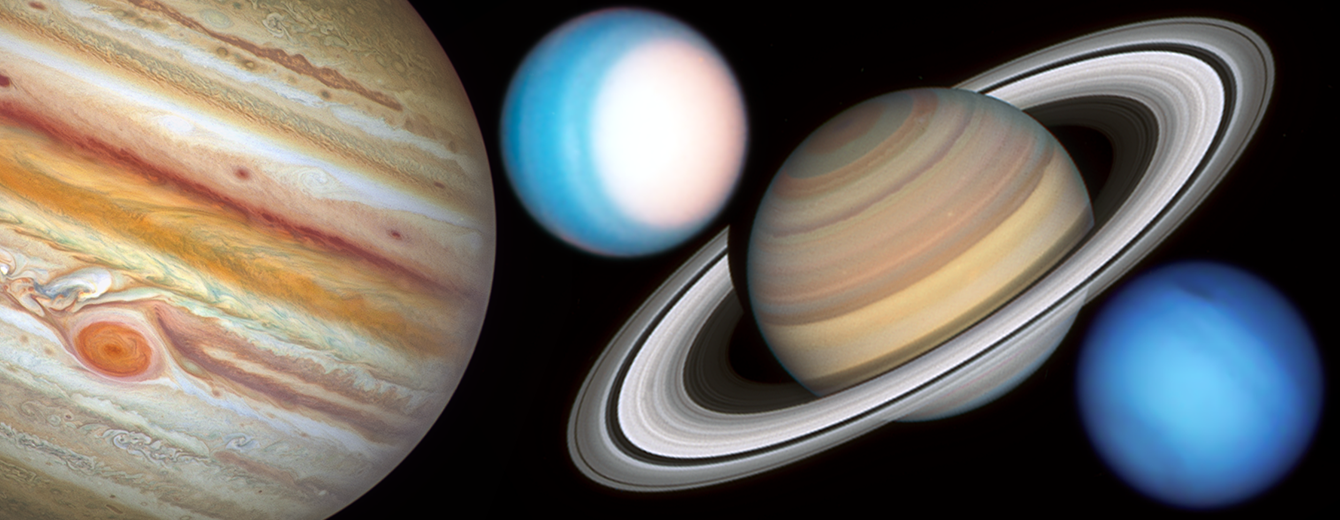Hubble captured the best sequence of images of the reverberation of light through space caused by the outburst of a star. In January 2002, an unexplained flash of light from a red supergiant star left what looked like an expanding bubble of debris. In fact, the light was simply illuminating clouds that were already in place around the star. Since light travels at a finite speed, the flash took years to reach the most distant clouds and expose them. This phenomenon, called a “light echo,” is reminiscent of sound waves echoing down a canyon and “revealing” its walls.

The red star at the center is an unusual, erupting supergiant called V838 Monocerotis, located about 20,000 light-years away. During its outburst, the star's intrinsic brightness flared to roughly 600,000 times that of our Sun. The star may have swallowed a companion star or planet, triggering the burst. The dark gaps around the red star are voids in the dust – like empty pockets within Swiss cheese. Light echoes common around supernovas, but V838 Mon did not detonate itself; the flash seems to be a unique and little-understood transient phenomenon.
RS Puppis
Hubble captured another light echo around the Cepheid variable star called RS Puppis in 2013. Each time the star pulsates, it sends another wave of light into the cloud of gas and dust that surrounds it. These rippling light flashes are similar to the ripples produced in a pond when a series of stones is thrown into the water. To our eye, they create a ripple pattern that appears to be expanding outward from the star. Hubble's Advanced Camera for Surveys took these images in visible light over seven days in March and April of 2010. Each individual image had an exposure time of 23 minutes.
Learn More
Hubble Science Highlights
Discover the breadth and depth of Hubble's exciting discoveries!

Studying the Planets and Moons
Hubble’s systematic observations chart the ever-changing environments of our solar system's planets and their moons.

Tracking Evolution in the Asteroid Belt
These conglomerates of rock and ice may hold clues to the early solar system.

Uncovering Icy Objects in the Kuiper Belt
Hubble’s discoveries helped NASA plan the New Horizon spacecraft’s flyby of Pluto and beyond.

Exploring the Birth of Stars
Seeing ultraviolet, visible, and near-infrared light helps Hubble uncover the mysteries of star formation.

The Death Throes of Stars
When stars die, they throw off their outer layers, creating the clouds that birth new stars.

Finding Planetary Construction Zones
Hubble’s sensitivity uncovers the seeds of planets in enormous disks of gas and dust around stars.

Recognizing Worlds Beyond Our Sun
Hubble can detect and measure the basic organic components for life on planets orbiting other stars.

Tracing the Growth of Galaxies
Hubble's Deep Field observations are instrumental in tracing the growth of galaxies.

Galaxy Details and Mergers
Galaxies evolve through gravitational interaction with their neighbors, creating a menagerie of forms.

Monster Black Holes are Everywhere
Supermassive black holes lie at the heart of nearly every galaxy.

Homing in on Cosmic Explosions
Hubble helps astronomers better understand and define some of the largest explosions in the universe.

Discovering the Runaway Universe
Our cosmos is growing, and that expansion rate is accelerating.

Focusing in on Gravitational Lenses
Gravitational lenses are 'Nature's Boost', expanding our view deeper into space and farther back in time.

Shining a Light on Dark Matter
The gravitational pull of dark matter guides the formation of everything we can see in the universe.

Mapping the Cosmic Web
Filaments and sheets of matter create an interconnected web that forms the large-scale structure of the universe.



